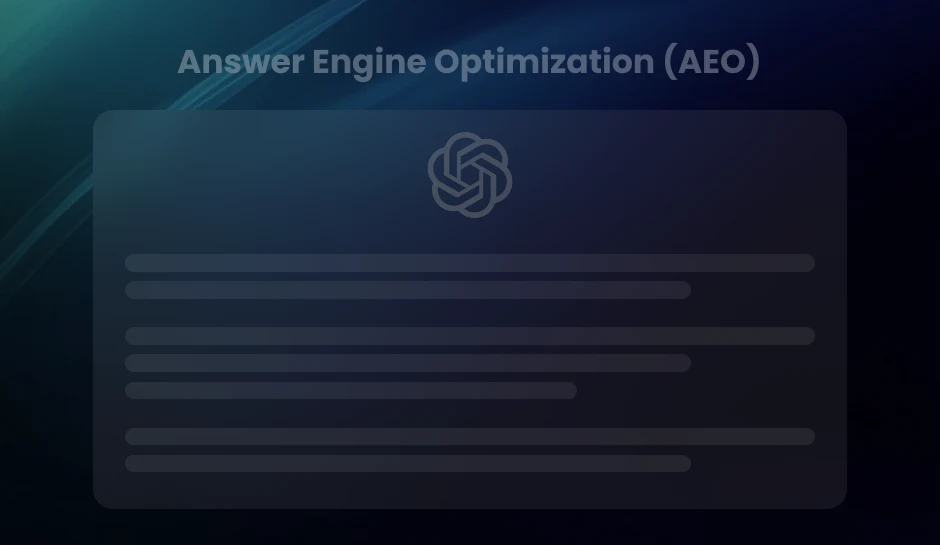Cracking the Code: How Attribution Conversion Tracking Connects Campaigns to Revenue
Struggling to understand which marketing channels truly drive conversions? Discover how attribution conversion tracking links every customer action to revenue, empowers data-driven decisions, and reveals what’s working in your campaigns. From UTM best practices to AI-driven insights, this guide has it all.
Attribution conversion tracking pinpoints which marketing efforts lead to a conversion, whether a sale, a sign-up, or another key action. In a landscape where customers engage with brands across multiple channels, messages, and platforms, understanding their path before purchasing no longer offers a competitive edge; it’s the foundation of performance marketing.
Attribution goes far beyond assigning credit. It clarifies which campaign elements influence outcomes, making it possible to invest more in what works and pivot away from what doesn’t. Without it, marketing decisions become reactive guesses rather than data-driven moves.
When teams map specific customer actions to ads, emails, social posts, or SEO strategies, they can optimize spend, forecast better, and scale high-performing channels. This post dives deep into the mechanics of attribution conversion tracking, examining key models, must-have tools, implementation best practices, and how brands use this data to drive measurable growth.
The Engine Behind Smarter Marketing: Conversion Tracking’s Central Role
What Counts as a Conversion?
A conversion occurs when a user completes a desired action on a website or digital platform. Depending on campaign goals and business objectives, this could take multiple forms. A purchase on an e-commerce store qualifies as a direct revenue-generating conversion. Filling out a lead generation form on a landing page triggers a data capture event that feeds into sales pipelines. Subscribing to a newsletter or downloading a whitepaper represents engagement-based conversions supporting wider funnel progression.
- Sales:
- Lead captures:
- Content engagement:
- User behaviors:
Transactions completed online or through tracked offline channels.
Form submissions for consultations, demos, or quotes.
Newsletter signups, webinar registrations, or gated asset downloads.
Account creations, trial activations, or significant feature uses in SaaS funnels.
Tracking Conversions: From Insight to Deployment
Conversion tracking allows marketing teams to measure performance with precision, which allows more than just measurement-it drives optimization. By inserting tracking pixels, tags, or SDKs across user touchpoints, marketers can associate individual actions with specific creative assets, audience segments, and platforms.
This level of granularity feeds ROAS calculations, supports budget reallocation in real-time, and uncovers underperforming components. For instance, a campaign across Meta and Google Ads could spend 70% of its budget on one channel yet deliver only 40% of total conversions. Tracking exposes these imbalances instantly.
Campaign iterations become data-driven rather than speculative. Messaging gets refined based on what produces completion events instead of relying on vanity metrics (likes, impressions, or reach).
Attribution: Connecting Actions to Origins
Knowing that a conversion happened doesn’t explain why it happened. That’s where attribution enters the cycle. Assigning each conversion to the correct channel, campaign, creative, keyword, or audience segment ensures credit flows to the deserving source.
This alignment is non-negotiable for performance-focused marketers. Without attribution, channels with low ROI may appear profitable because conversions are double-counted or misplaced. Conversely, high-impact channels may get defunded despite exceeding targets. Consider a scenario where paid search drives 26% of site traffic but accounts for only 8% of attributed conversions. If conversions weren’t tracked accurately across touchpoints and devices, this discrepancy could go unnoticed, and decisions would be misinformed.
Conversion tracking, paired with rigorous attribution, doesn’t just inform campaign success; it discovers the mechanics behind it. Every click, impression, and call matters, but only conversion tracking reveals which ones move the needle.
Pro Tip- Use multi-touch attribution models to get the full picture. First-click and last-click models often miss the complex paths users take before converting. Implement models like linear, time decay, or data-driven attribution to understand how each touchpoint contributes to the outcome, especially in multi-channel campaigns.
Mapping the Customer Journey for Accurate Attribution
Plotting the Full Path: What Customer Journey Mapping Reveals
Customer journey mapping charts the interactions an individual experiences before purchasing or completing a desired action. This structured visualization uncovers how users move between different stages-awareness, consideration, and decision-often across multiple platforms and devices. Every touchpoint, whether a click on a paid ad, an organic search query, or a scroll through a social media feed, leaves a data trail.
For example, a typical journey might begin with a social media ad impression. A few days later, the same user might return after searching for the brand name on Google. Eventually, they might convert after receiving a remarketing email. Each of these moments plays a role and mapping them sheds light on that complexity.
Multi-Touch Interactions: How Customers Navigate Across Channels
- Viewing a sponsored YouTube video
- Clicking through a Facebook carousel ad
- Engaging with an influencer’s post
- Reading customer reviews on third-party sites
- Browsing product pages via an organic search result
Why Journey Mapping Unlocks Attribution Accuracy
Without visibility into the full customer journey, attribution models misrepresent the role of each channel. Consider a last-click model: it gives all credit to the final touchpoint, disregarding dozens of upstream influences. That artificially skews performance metrics, leading to underinvestment in vital awareness-stage initiatives.
By contrast, a mapped journey provides the context needed to apply advanced attribution models-linear, time decay, algorithmic-that reflect true influence. It ensures that supporting channels like display impressions or influencer content aren’t ignored simply because they didn’t drive the final click. With this alignment, marketers stop optimizing for clicks and start optimizing for impact.
Build Accuracy from the Start: Setting Up Conversion Tracking Correctly
Tagging Best Practices Using UTM Parameters
Every conversion tracking strategy begins at the URL level. When traffic sources aren’t precisely tagged, attribution collapses. UTM parameters-utm_source, utm_medium, utm_campaign, utm_content, and utm_term-define each visit’s origin, channel, and context. This specificity enables analytics tools like Google Analytics 4, Adobe Analytics, or Mixpanel to assign credit accurately.
- Standardize naming conventions:
- Differentiate campaigns clearly:
- Map all UTM parameters to campaign objectives:
Use lowercase, avoid spaces, and maintain consistent syntax. “Email” and “email” track separately.
Include unique campaign names and specify ad variations using the utm_content parameter.
Align tags with how conversions are reported internally.
Skipping UTM tagging or using arbitrary structures leads to data fragmentation. Consistent UTM logic allows comparison across channels and long-term trend monitoring.
Importance of Consistent Tracking Across All Touchpoints
Users rarely convert after a single ad exposure. Email clicks, social views, PPC ads, and organic search all play a role. Without uniform tracking implementation across these touchpoints, data gaps emerge. This influences attribution models and distorts ROI assessment.
All media, CRM, SEO, and content teams are aligned on the same tagging taxonomy. When running paid media on platforms like Meta, LinkedIn, or TikTok, ensure URL parameters carry forward after redirections and that destination landing pages don’t strip them on load.
Integrate platform-specific tracking tools such as Facebook Pixel, TikTok Pixel, and LinkedIn Insight Tag. Combine these with first-party analytics for a composite view of how users move across assets.
How to Ensure Accurate Click and Conversion Data Collection
- Install conversion scripts on confirmation pages only:
- Use unique identifiers per conversion:
- Test all flow variants:
- Leverage server-side tracking where possible:
Avoid firing the event on form initiation or intermediate steps.
Pair lead or transaction IDs with cookie/session data to trace conversion sources over time.
cross-device testing, mobile vs. desktop, and campaign-specific landing pages. Ensure tracking persists across each variant.
Reduce dependency on client-side events that can be interrupted by ad-blockers or privacy settings.
Incrementality vs. Correlation: Measuring What Truly Moves the Needle
Correlation Alone Doesn’t Prove Campaign Effectiveness
A spike in conversions after launching a campaign looks good on the surface, but correlation alone doesn’t confirm that the ads caused the outcome. Digital marketers often misread performance by relying solely on attribution data, which shows association, not causal impact. Just because conversions happened after users saw an ad doesn’t mean the ad drove those conversions.
Measuring True Lift with Incrementality Testing
Incrementality testing isolates cause and effect by comparing outcomes between users exposed to a campaign and a statistically similar group not exposed. This test group-control group method identifies the actual impact of your marketing.
One common approach is a geo-holdout test. Marketers launch a campaign in specific regions while withholding it from others. By comparing conversion rates, they uncover measurable lift directly attributable to the campaign. The concept mirrors A/B testing but at scale and across entire audience segments.
- Test group:
- Control group:
- Measurement:
Receives the campaign experience-emails, ads, retargeting, etc.
Does not receive the campaign or is held out from seeing it.
Conversion rate differences between the two groups express the campaign’s incremental impact.
Retailers like Wayfair and tech brands like Google run frequent incrementality experiments via holdouts, ghost ads, and synthetic controls to validate media spend. Rather than relying on click paths alone, they focus on provable impact: what would have happened otherwise?
Simple Tests You Can Run Today
You don’t need advanced tools to begin. Start with small-scale test-and-control experiments:
- Email campaigns:
- Paid social:
- Retargeting:
Hold out 10% of your list, run a campaign to the remaining 90%, then compare conversion rates.
Suppress a geographic region or defined audience segment and monitor organic vs. paid performance.
Create a randomized control group that doesn’t receive retargeting ads and track whether purchase behavior diverges significantly.
Effective incrementality testing relies on statistical rigor-randomization, sufficient sample size, and clean group assignment. But even simple control experiments can uncover whether you spend is driving new results or just capturing conversions that would’ve occurred anyway.
Pro Tip- Always combine incrementality testing with attribution insights for a full-funnel view. Attribution tells you where conversions came from, but incrementality tells you whether your marketing made a difference. Use both together to optimize spend, keeping high-impact campaigns while cutting those that only capture organic intent. .
Smarter Attribution: How AI and Machine Learning Revolutionize Conversion Tracking
AI Enhances Attribution Accuracy at Scale
AI systems outperform manual attribution models by continuously analyzing vast volumes of data across multiple touchpoints. While traditional rules-based models assign credit based on sequential logic, AI adapts dynamically, recognizing hidden patterns in customer behavior that rules alone can’t detect. For example, Google’s data-driven attribution model employs machine learning to evaluate all interactions across the conversion path, assigning credit based on actual contribution rather than static position.
AI doesn’t just digest data in real-world applications; it learns from it. Deep learning algorithms consider temporal patterns, cross-device interactions, and historically underweighted channels. This process refines the credit distribution over time, often surfacing undervalued marketing efforts previously drowned in last click bias.
Predictive Analytics: Spotting Future Conversions Before They Happen
Machine learning enables attribution systems to forecast, not just trace, conversions. By analyzing previous behavior, intent signals, and contextual variables, AI predicts the likelihood of a user becoming a customer. With predictive models in place, marketers can prioritize high-converting segments and reallocate budget before campaign performance data is available in aggregate.
- Facebook’s Conversion Lift experiment tool uses predictive modeling to measure the causal impact of ads beyond basic attribution.
- Based on behavioral and firmographic data, Salesforce Einstein scores lead in real time, feeding insights into attribution paths.
- Adobe Sensei automates the detection of conversion trends and forecasts multichannel ROI using machine learning classifiers.
This level of foresight reduces dependence on lagging indicators and enables proactive optimization. Instead of reacting to performance, marketers working with predictive analytics act ahead of audience behavior.
Pro Tip- Integrate predictive attribution models early in your campaign planning—not just during analysis. This allows your team to identify and prioritize high-value segments before deploying spend, ensuring AI’s predictive insights inform both creative strategy and channel mix from the outset.
Data-Driven Decision Making: Turning Insights into Action
Let Attribution Data Guide Every Strategic Move
Raw data alone doesn’t shift market share, but clarified insights from attribution tracking can. Once every channel, touchpoint, and conversion are properly mapped, marketers can identify which parts of a campaign deliver measurable business value. This visibility allows for faster iteration and sharper prioritization.
Consider a campaign running across paid search, display, and influencer activation. Attribution data may reveal that paid search captures the last-click conversions, but influencer content drives most top-of-funnel brand engagement. Spreadsheets don’t reveal this nuance, but attribution models do.
Reallocating Budget Using Conversion Tracking Data
Once campaign data flows through attribution models, budget decisions stop being abstract. Teams can pinpoint non-performing placements and redirect investment to those with proven ROI. For example:
- Paid media optimization:
- Creative validation:
- Channel prioritization:
Ad spend is shifted accordingly if UTM-tagged Facebook ads show a higher weighted contribution to mid-funnel conversions than TikTok.
Variants of the same ad can be tied to conversion paths. Data often shows that “low production value” vertical videos outperform polished formats in mobile-first campaigns.
Conversion tracking reveals that programmatic display brings lower-cost conversions when paired with retargeting on social. Budgets shift to amplify that cross-channel synergy.
Tracking Is Only Useful If You Act on It
Campaign data must drive fast, confident decisions. Attribution isn’t a monthly report-it’s a daily signal to refine, reduce, or reinvest. High-performing advertisers use these signals to adapt media spend in near real-time, test bold creative shifts, and abandon underperforming channels before they burn budget.
The organizations that outperform aren’t the ones that track the most metrics. They’re the ones who act fastest on what those metrics confirm.
Common Pitfalls and How to Avoid Them
| Pitfall | Description | Consequence | Solution |
|---|---|---|---|
| Missing or Broken Tracking Pixels | Tracking pixels may be absent or malfunctioning after site changes or poor coordination. | Lost impressions, clicks, and conversion attribution—resulting in incomplete data. | Perform regular pixel audits using browser extensions, debug tools, or automated scripts. Include QA before and after every launch. |
| Misaligned Attribution Models Across Platforms | Platforms like Google Ads and Facebook use different default attribution logic. | Leads to inconsistent ROI analysis and confused performance comparisons. | Select a unified attribution model (e.g., last-click, linear). Use data warehousing tools like BigQuery or Snowflake for normalization. |
| Over-Reliance on Last-Click Data | Attribution gives full credit to the final interaction. | Top- and mid-funnel channels are undervalued, harming growth strategies. | Use GA4’s attribution comparison tool or multi-touch models to understand assistive value across the funnel. |
| Not Accounting for Conversion Delays | Sales cycles may be longer (especially in B2B or high-ticket eCommerce). | Early-stage campaigns appear ineffective due to short attribution windows. | Extend attribution windows (e.g., up to 90 days in Google Ads). Analyze conversion lag to capture full user journey. |
| Ignoring Assisted Conversions | Many touchpoints influence the journey without closing it. | Underfunding important awareness and nurture stages. | Track assisted conversions in GA4’s Conversion Paths. Evaluate channel roles (first, middle, last) to allocate budget more wisely. |
Command the Full Picture: Mastering Attribution Conversion Tracking
Mastery in attribution conversion tracking doesn’t stem from guesswork. It comes from precision, methodology, and a relentless focus on refining each part of the marketing machine. Let’s bring it all into focus.
What Drives Conversions?
Brands that outperform competitors know exactly which touchpoints earn conversions. They don’t rely on assumptions-they test, measure, compare, and evolve. Attribution models identify the specific journey each customer takes, and conversion tracking gives visibility into the outcomes of those journeys.
- Customer journeys are not linear
- Clicks alone mislead
- Single-source data has limits
Apply multi-touch attribution to assign value across the entire funnel.
Tie behavior to outcomes by integrating advanced tracking with real-time analytics.
Enterprise campaigns pull from ad platforms, CRM systems, server logs, and offline sales channels.
Move Beyond Static Models
Marketers who stop at last-click attribution miss the hidden influencers in the journey. Some channels nurture, others convert, but both matters. Multi-touch, rules-based, and algorithmic models provide different layers of clarity-apply them strategically.
Architect your tracking setup with flexibility in mind. Use platforms that adapt to changes in privacy legislation, cookie infrastructure, and platform integrations. This keeps your attribution accurate when browsers phase out third-party cookies or new API frameworks emerge.
Instinct Doesn’t Outperform Testing
Validate attribution insights using structured tests, holdouts, A/B sequencing, and geo-split campaigns. When marketers rely solely on correlation, they risk investing in “perceived impact.” Incrementality testing removes doubt.
Where does your current data set fall short? Find the blind spots. This might mean expanding tracking into offline channels, layering in app attribution, or enriching datasets with CRM event-level timestamps. Without that, insights remain shallow.
Insights Are Only Powerful When Applied
Every insight generated from attribution and conversion tracking should feed into campaign optimization. Once you know what drives actual business results, budget allocation, channel mix, and messaging strategy all shift.
AI-enhanced models don’t just describe behavior-they predict high-converting combinations. Marketers integrating machine learning into their stack respond to market conditions faster, with sharper targeting and iteration cycles.
Scale Through Continuous Optimization
This isn’t a one-time setup or a quarterly audit. Winning marketers revisit attribution configurations weekly, adapt conversion events as goals evolve, and use ongoing inputs to rebuild models that reflect real-time dynamics.
- Define your ideal tracking stack, then pressure test it.
- Set realistic attribution windows based on actual purchase cycles.
- Feed attribution insights into both top-of-tunnel and retargeting strategies.
Back every marketing decision with numbers that track to revenue. Stop optimizing for vanity metrics. Use attribution conversion tracking to quantify what works, eliminate waste, and scale precision.
Key Takeaways
- Attribution models go beyond surface-level metrics to show which channels and touchpoints actually drive conversions, enabling smarter, data-driven budget allocation and performance optimization.
- Reliable tracking infrastructure—complete with UTM tagging, pixel audits, and consistent cross-channel setup—is non-negotiable for collecting accurate, actionable data across the full customer journey.
- Relying solely on last-click attribution or correlation often undervalues upper-funnel activity. Multi-touch attribution and incrementality testing provide a clearer picture of causality and assistive impact.
- The real power of attribution lies in applying the data. Marketers who continuously analyze and adapt based on attribution insights outpace competitors in agility, efficiency, and ROI.
What’s your next test? What’s the metric that matters?
Start there, and don’t stop measuring. Need help? DiGGrowth’s got your back. Drop us a line or two at info@diggrowth.com to get started.
Ready to get started?
Increase your marketing ROI by 30% with custom dashboards & reports that present a clear picture of marketing effectiveness
Start Free Trial
Experience Premium Marketing Analytics At Budget-Friendly Pricing.

Learn how you can accurately measure return on marketing investment.
Additional Resources
Don’t Let AI Break Your Brand: What Every CMO Should Know
AI isn’t just another marketing tool. It’s changing...
Read full post postFrom Demos to Deployment: Why MCP Is the Foundation of Agentic AI
A quiet revolution is unfolding in AI. And...
Read full post postAnswer Engine Optimization (AEO): The New Frontier of SEO in 2025
As digital experiences continue to evolve, so does...
Read full post postFAQ's
Attribution conversion tracking identifies which marketing channels, campaigns, and touchpoints lead to a conversion, such as a sale, signup, or download. It enables marketers to understand what drives results, allowing them to optimize spend, refine messaging, and scale high-performing efforts based on data rather than assumptions.
While conversion tracking tells you that a conversion occurred, attribution explains why it happened by assigning credit to the specific interactions that led to it. Attribution reveals the true value of each channel or campaign, helping avoid misallocation of marketing budget and missed optimization opportunities.
Last click: Gives all credit to the final interaction; simple but often misleading. First-click: Attributes conversion to the first touchpoint; useful for evaluating awareness channels. Linear: Distributes credit evenly across all touchpoints; useful for full-funnel insight. Time-decay: Gives more credit to interactions closer to the conversion; ideal for long journeys. Data-driven (AI-based): This method uses machine learning to assign credit based on actual impact; it is best for mature setups with sufficient data.
UTM parameters are essential for accurately attributing traffic and conversions to the right campaigns, sources, and content. Without consistent, well-structured UTM tagging, attribution models will misinterpret or lose data, leading to incorrect conclusions about performance.
Use incrementality testing, which compares a test group (exposed to the campaign) to a control group (not exposed). By isolating cause and effect, this method reveals whether a campaign is truly driving new conversions or simply capturing those that would have occurred anyway.
 Shahzad Mussawir
Shahzad Mussawir  Arpit Srivastava
Arpit Srivastava 

